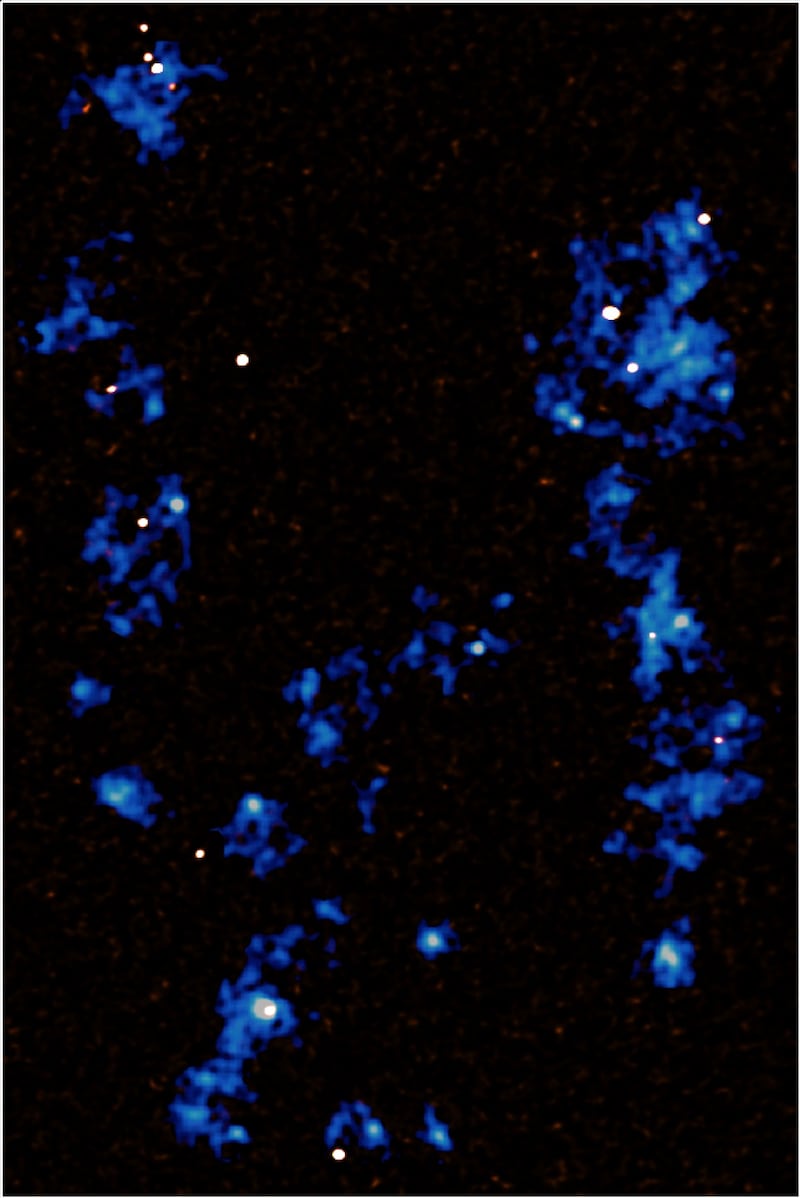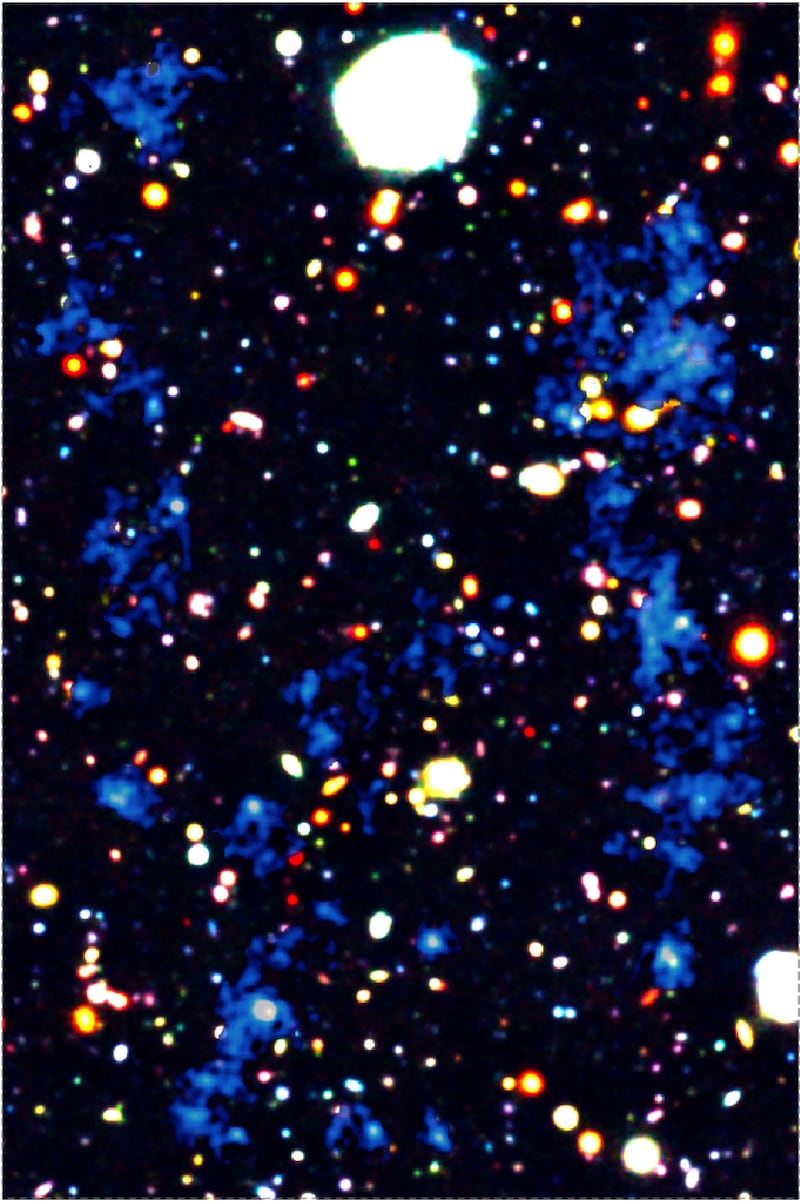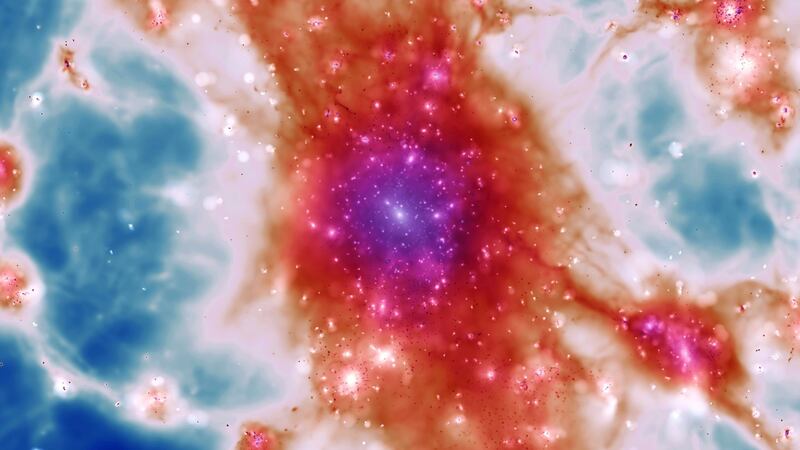Faintly glowing wisps of gas have given astronomers a rare glimpse of one of the universe’s largest but most elusive features – the intergalactic filaments of the cosmic web.
The threads, which are excited by the intense light of surrounding star-forming galaxies, were discovered using the characteristic radiation they produce.
In a new study, scientists report the detection of individual filaments of intergalactic gas spanning among young galaxies in a newly forming cluster, and fuelling their growth.
The analysis was done on SSA22, a massive proto-cluster of galaxies located about 12 billion light years away in the constellation of Aquarius.
Cosmological simulations predict that more than 60% of the hydrogen created during the Big Bang is distributed as long filaments, which thread through the intergalactic medium and form the so-called cosmic web.

Where they cross, galaxies form and are fed by streams of cooling gas.
Lead author Dr Hideki Umehata, of the RIKEN Cluster for Pioneering Research and the University of Tokyo, said: “The presence of such intense radiation suggests very strongly that gas falling along the filaments under the force of gravity triggers the formation of many starbursting galaxies and supermassive black holes, ultimately giving the universe the structure that we see today.
“Previous observations have shown similar emission from blobs of gas extending beyond galaxies, but now we have been able to clearly show that these filaments stretch to much larger distances, going even beyond the edge of the field that we viewed.
“This adds credence to the idea that these filaments are actually powering the intense activity that we see in galaxies within large structures assembling in the early universe.”
Using the Multi Unit Spectroscopic Explorer on the European Southern Observatory’s Very Large Telescope, Dr Umehata and colleagues detected and mapped the light emitted by hydrogen irradiated by the galaxies within a distant proto-cluster.
The results show the gas is arranged into long filaments, providing fuel for intense formation of stars and for the growth of supermassive black holes.
This is in accordance with predictions of models of galaxy formation.
According to the study published in the journal Science, the detected filaments contained a significant reservoir of gas, which will help to fuel the continued growth of galaxies in this region.
Computer simulations, such as those carried out by Durham’s Institute for Computational Cosmology (ICC), indicate that the cosmic web forms the scaffolding of the cosmos, providing the framework for galaxies and clusters to form and evolve.

Research co-author Professor Michele Fumagalli, at Durham University, said: “It is very exciting to clearly see for the first time multiple and extended filaments of gas connecting galaxies in the early universe.
“We finally have a way to map this cosmic web directly, and to understand in detail its role in regulating the formation of supermassive black holes and galaxies.”
Calvin Sykes, a PhD student in the ICC who contributed to the study, said: “These observations represent a very important step in validating our theory of the assembly of galaxies, adding a key piece of the puzzle.”
The research was funded at Durham University by the UK’s Science and Technology Facilities Council and the European Research Council.








